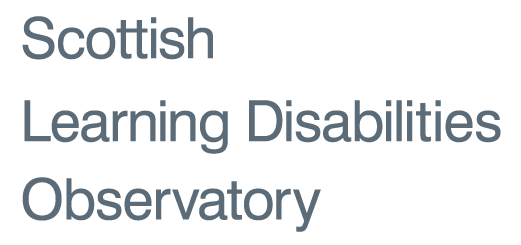“Is it one of those weight loss groups?” The experience of recruiting jurors for the Research Voices Project
Evidence suggests that recruiting people with learning disabilities into research studies that directly impact them is an ongoing challenge (Cleaver et al, 2010). The Research Voices project recruited a demographically representative group of 12 people with learning disabilities from the Greater Glasgow and Clyde health board area to form a Citizens’ Jury.
While a typical Citizens’ Jury may use truly random selection using electoral registers or phone books, this process was more purposeful given the size of the population. The project experienced many of the challenges recorded in the literature around barriers to recruitment of people with learning disabilities.
What were the challenges we had to overcome?
Demographics
Recruiting a demographically representative group was difficult to achieve as we were not able to select from a large volume of applications. This meant we had to be specific towards the end of the project about who we would like to meet (for example, asking intermediary organisations to meet with older people who might be interested).
Gatekeeping
The project team did encounter gatekeeping from organisations, some of whom assumed that the people they supported would have no interest in the project or no capacity to contribute. In these instances, we were often unable to directly contact people with learning disabilities using that service to ask them their views.
Timings and scheduling
The project allocated two months for recruitment, with a dedicated part time Project Lead to prioritise this activity. However, this deadline was difficult to meet and some applicants who were otherwise a good fit for the project could not be selected because they were not able to meet with the scheduling demands.
What even is a Citizens’ Jury?
One of the draws of this project are that there has never been a Citizens’ Jury on health research done in this population before. However, this meant that some applicants didn’t have a frame of reference, leading to confusion. Applicants wanted to know ‘Is this one of those weight loss groups?’ or ask if the group could help them to manage long term conditions. The process of recruitment was designed to help unpick some of the more complex ideas. For example, the interview process used a Talking Mat to discuss how much each applicant knew about health research, and concepts such as consent and risk. This allowed applicants to get to know more about the subject matter. However, for some applicants, this wasn’t something they could connect to and they ultimately did not join as jurors.
What worked well?
Dedicated staff time
Having a Project Lead who was able to prioritise recruitment and be flexible about how and when it happened. For example, meeting people for coffee locally or doing home visits. This flexibility allowed the project to pursue multiple opportunities for recruitment.
Purposeful recruitment
Recruitment was purposeful to achieve a good mix of participants from different backgrounds and demographics. For example, to recruit people in age range 16-24, we worked with an inclusion officer in Glasgow who was able to introduce us to a school where we recruited our two youngest participants.
Highlighting the benefits of taking part
While understanding of the process was a barrier for some people who took part, we found success in highlighting that the purpose of the project was to pave the way for other people with learning disabilities to have their voice heard. Many participants felt drawn to feeling like they were helping and making a contribution.
Active recruitment
The approach used for recruitment in this project mirrors what Nicholson et al (2012) refer to in their study as ‘active recruitment’, where the project lead and intermediaries do more than just distribute information and take an active role in following up with potential applicants. For some individuals, this meant more than one visit or multiple phone calls to go over what the project is about and what their involvement would mean. An indicator that this approach worked well was that some individuals who had initially expressed interest in the project later chose not to take part. For one applicant, this was because they understood the time commitment of the project and felt they could not commit fully. While disappointing, this was good evidence to the team that people were making an informed choice.
The use of Talking Mats
Talking Mats were used during the interview stage to explore two key topics: communication skills and knowledge of health research. These Talking Mats were a very useful tool for engaging applicants in meaningful conversation, but also allowed us to express some of the activities and topics that the person may encounter in the project (for example, by asking how the person felt about asking questions, we may be able to introduce the idea of expert witnesses).
Quieter Voices Network
The process of recruitment was most accessible for people with mild to moderate learning disabilities, though communication support was available to invite a wider range to participate than applied. However, the quieter voices network was established as a parallel engagement project to the Citizens’ Jury. It was useful to be able to tell people with more severe learning disabilities and their families that there would be an opportunity to get involved, without excluding them from the project.
References
Cleaver, S. , Ouellette‐Kuntz, H. and Sakar, A. (2010), Participation in intellectual disability research: a review of 20 years of studies. Journal of Intellectual Disability Research, 54: 187-193. doi:10.1111/j.1365-2788.2010.01256.x
Available at: https://www.ncbi.nlm.nih.gov/pubmed/20146739
Nicholson, L. , Colyer, M. and Cooper, S. (2013), Recruitment to intellectual disability research: a qualitative study. Journal of Intellectual Disability Research, 57: 647-656. doi:10.1111/j.1365-2788.2012.01573.x
Available at: https://www.ncbi.nlm.nih.gov/pubmed/22672134
Oliver‐Africano P., Dickens S., Ahmed Z., Bouras N., Cooray S., Deb S. et al. (2010) Overcoming the barriers experienced in conducting a medication trial in adults with aggressive challenging behaviour. Journal of Intellectual Disability Research 54, 17– 25.
Available at: https://www.ncbi.nlm.nih.gov/pubmed/19627427
